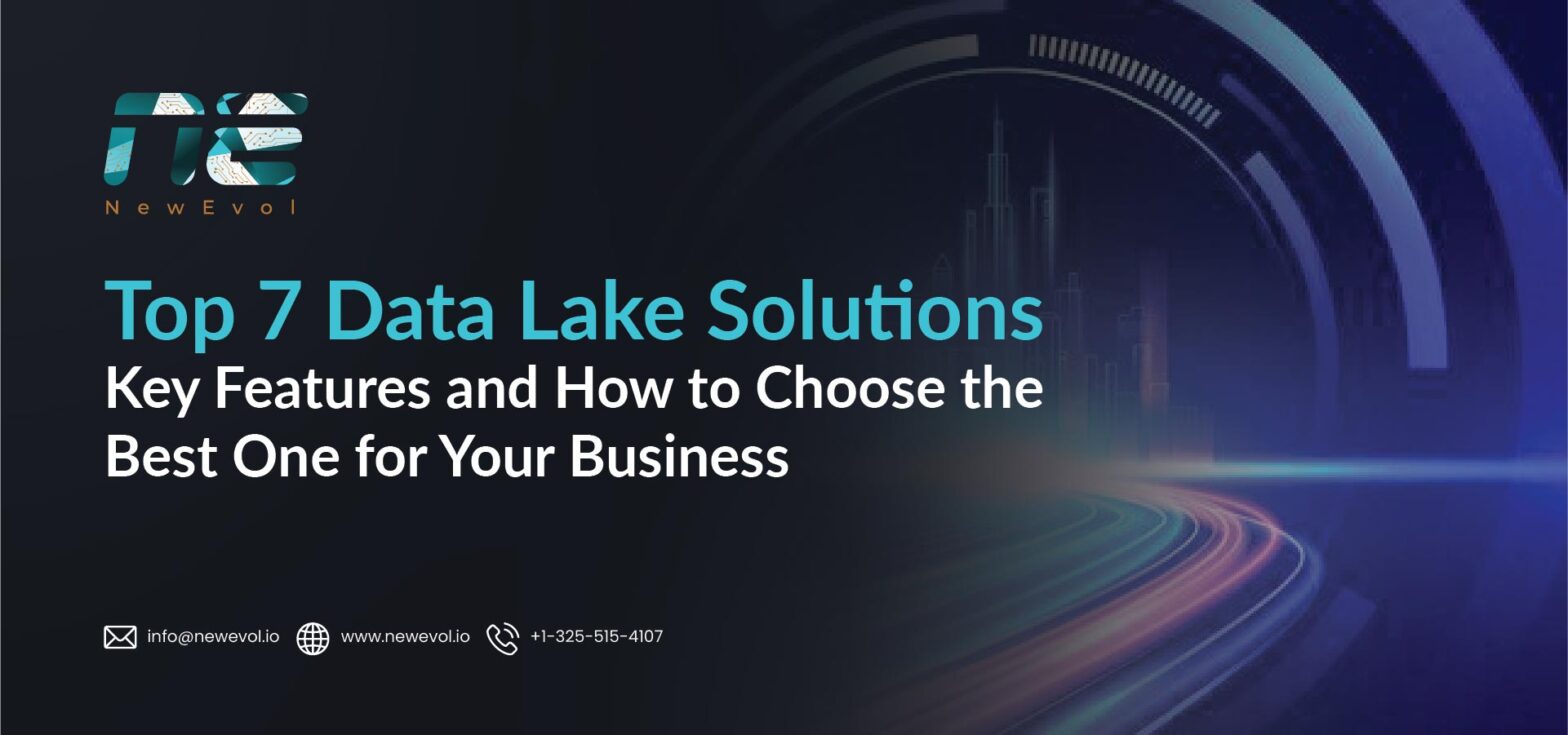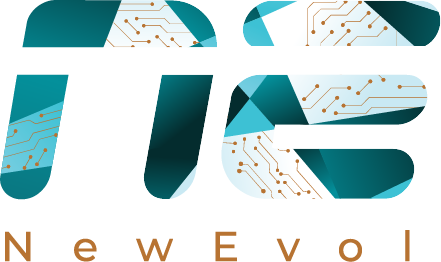Top 7 Data Lake Solutions: Key Features and How to Choose the Best One for Your Business

Spanish enterprises are generating data at unprecedented rates. From customer transactions and social media interactions to IoT devices and operational logs, organizations across finance, healthcare, manufacturing, and retail are inundated with vast and diverse datasets. While data is a strategic asset, its true value lies in the ability to store, manage, and analyze it efficiently.
The global data lake market was valued at approximately USD 14.7 billion in 2024 and is projected to reach USD 26.46 billion in 2025, growing at a CAGR of around 18% over the forecast period.
This is where data lakes play a critical role. Unlike traditional databases, data lakes are designed to handle structured, semi-structured, and unstructured data at scale, providing enterprises with the flexibility to harness insights across multiple business functions. For organizations in Spain seeking a competitive edge, selecting the right data lake solution, while integrating robust cybersecurity services in Spain, can transform data into actionable intelligence, improve decision-making, and drive innovation.
What is a Data Lake?
A data lake is a centralized repository that stores raw data from multiple sources in its native format. Unlike conventional data warehouses, which require structured schema before data ingestion, data lakes allow organizations to:
- Ingest large volumes of diverse data without predefined formats.
- Perform advanced analytics, including machine learning and AI-driven insights.
- Consolidate data from disparate sources for a holistic view of enterprise operations.
- Support real-time analytics and predictive modeling.
In Spain, where enterprises are increasingly adopting cloud computing and hybrid IT environments, data lakes provide the scalability, flexibility, and efficiency required for modern data management and analytics.
Why Choosing the Right Data Lake Matters
Selecting a data lake solution is not just a technical decision, it impacts operational efficiency, data governance, regulatory compliance, and business strategy. An ideal data lake should:
- Handle large-scale, diverse datasets efficiently.
- Provide robust security and compliance, especially for sensitive data governed under European data protection laws (GDPR).
- Enable seamless integration with analytics, AI, and machine learning tools.
- Offer scalability to accommodate future growth and emerging business needs.
With these criteria in mind, let’s explore the top 7 data lake solutions currently available and their key features.
1. Amazon Web Services (AWS) Lake Formation
Key Features:
- Simplified setup and management of data lakes in the cloud.
- Granular access control and security integration with AWS IAM.
- Built-in support for analytics, machine learning, and data cataloging.
- Automated data ingestion from diverse sources.
Why It Stands Out:
AWS Lake Formation is ideal for enterprises seeking a cloud-native, scalable, and secure solution with a wide ecosystem of analytics and AI tools.
2. Microsoft Azure Data Lake
Key Features:
- Supports both structured and unstructured data.
- Seamless integration with Azure Synapse Analytics, Power BI, and AI services.
- Enterprise-grade security and compliance with GDPR and ISO standards.
- High scalability with hierarchical namespace architecture.
Why It Stands Out:
Azure Data Lake is well-suited for Spanish organizations leveraging Microsoft ecosystems and requiring strong analytics integration.
3. Google Cloud Storage and BigQuery
Key Features:
- Serverless architecture with auto-scaling capabilities.
- Integration with BigQuery for real-time analytics and AI modeling.
- Strong security features, including encryption at rest and in transit.
- Multi-cloud flexibility for hybrid deployments.
Why It Stands Out:
Google Cloud’s platform is ideal for enterprises looking for AI-driven insights and real-time analytics with minimal infrastructure management.
4. Snowflake Data Cloud
Key Features:
- Cloud-native architecture with separation of storage and compute.
- Native support for structured, semi-structured, and unstructured data.
- Integrated data sharing and collaboration features.
- Scalable compute resources for large-scale analytics workloads.
Why It Stands Out:
Snowflake excels in enabling data collaboration across teams while providing high performance for analytics-heavy workloads.
5. Cloudera Data Platform (CDP)
Key Features:
- Hybrid and multi-cloud deployment options.
- Support for machine learning, streaming analytics, and AI.
- Comprehensive data governance and GDPR compliance features.
- Built-in data security and role-based access controls.
Why It Stands Out:
Cloudera offers enterprise-grade governance and security, making it suitable for Spanish organizations in regulated industries like finance and healthcare.
6. IBM Cloud Pak for Data
Key Features:
- Unified platform combining data management, AI, and analytics.
- AI-powered data catalog and quality management tools.
- End-to-end security and compliance features.
- Integration with hybrid cloud environments for flexible deployment.
Why It Stands Out:
IBM’s solution is particularly effective for enterprises seeking integrated AI capabilities and comprehensive data governance.
7. Databricks Lakehouse Platform
Key Features:
- Combines the scalability of data lakes with the reliability of data warehouses.
- Supports machine learning, AI, and advanced analytics.
- Optimized for big data processing with Apache Spark.
- Strong collaboration features for data engineers, scientists, and analysts.
Why It Stands Out:
Databricks is ideal for organizations focused on AI-driven insights and collaborative analytics in large-scale data environments.
How to Choose the Best Data Lake for Your Business
The Asia-Pacific region is leading this growth, with a forecast CAGR of 24.1% between 2025 and 2030, fueled by rapid digital transformation and investments in sovereign-cloud infrastructures. Spain is likely to follow similar trends given its EU integration and digital initiatives.
Selecting the right data lake involves more than comparing features—it requires assessing organizational needs, technical requirements, and long-term goals. Here’s a step-by-step guide:
1. Define Your Data Strategy
- Identify the types of data you collect (structured, unstructured, semi-structured).
- Determine how the data will be used for analytics, reporting, and AI modeling.
- Assess your long-term scalability and storage requirements.
2. Evaluate Integration Capabilities
- Ensure the data lake integrates with existing systems, cloud platforms, and analytics tools.
- Consider AI and machine learning capabilities if predictive analytics is a priority.
3. Assess Security and Compliance
- Verify encryption, access control, and audit capabilities.
- Ensure compliance with GDPR and other relevant Spanish or European regulations.
4. Consider Performance and Scalability
- Look for platforms that can handle large volumes of data without latency.
- Check if storage and compute resources can scale independently to optimize cost and performance.
5. Evaluate Vendor Support and Ecosystem
- Review the vendor’s support services, documentation, and customer success programs.
- Assess ecosystem partnerships for AI, analytics, and business intelligence tools.
6. Cost Efficiency
- Consider total cost of ownership, including storage, compute, and licensing fees.
- Evaluate flexibility in scaling resources based on usage and business growth.
7. User Accessibility
- Ensure the platform provides intuitive interfaces and self-service analytics for business users.
- Check if teams can access and query data without deep technical expertise.
Benefits of a Well-Chosen Data Lake Solution
A strategically selected data lake solution offers multiple advantages for Spanish enterprises:
- Centralized Data Management – Consolidates data from multiple sources for unified analysis.
- Advanced Analytics and AI – Enables predictive modeling and actionable business insights.
- Regulatory Compliance – Facilitates GDPR-aligned data governance and audit readiness.
- Operational Efficiency – Reduces time and effort in data preparation and management.
- Scalability and Flexibility – Supports growth and evolving business needs.
- Competitive Advantage – Unlocks insights that inform strategic decisions and drive innovation.
NewEvol’s Expertise in Data Lake Solutions
NewEvol provides customized data lake solutions for Spanish enterprises, helping organizations:
- Identify the right platform based on business needs and data strategy.
- Integrate data lakes with AI, analytics, and machine learning workflows.
- Ensure regulatory compliance and robust cybersecurity practices.
- Optimize data management and analytics for actionable insights.
With NewEvol, businesses in Spain can transform their data into a strategic asset, enabling smarter decisions, improved operational efficiency, and long-term growth.
End Note
Data is one of the most valuable assets for any modern enterprise. A well-chosen data lake solution empowers Spanish organizations to store, manage, and analyze vast and diverse datasets efficiently. By understanding the key features of top data lake platforms and aligning them with business objectives, enterprises can maximize the value of their data investments.
Whether it is enabling AI-driven insights, ensuring regulatory compliance, or supporting scalable analytics, a dynamic and strategic data lake forms the backbone of a data-driven enterprise. Partnering with NewEvol ensures that your organization selects the most suitable solution, integrates it seamlessly, and leverages its full potential to drive innovation and competitiveness.
FAQs
1. What is a data lake?
A data lake is a centralized repository that stores structured, semi-structured, and unstructured data, enabling analytics and AI-driven insights.
2. How do I choose the right data lake solution?
Evaluate data types, integration needs, security and compliance, scalability, vendor support, and cost efficiency to select the best platform for your business.
3. What are the benefits of a data lake?
Centralized data management, AI analytics, operational efficiency, regulatory compliance, and scalable storage are key benefits.
4. Can data lakes support AI and machine learning?
Yes. Modern data lake platforms integrate with AI and ML tools to enable predictive analytics and actionable insights.
5. How can NewEvol help?
NewEvol provides customized data lake solutions, AI integration, compliance support, and strategic guidance to maximize data-driven business outcomes.

